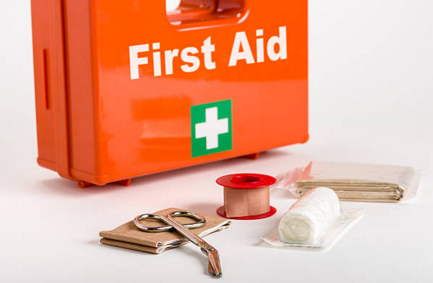
Eye injuries can result from industrial or domestic accidents. The eye is a sensitive organ and any injury to the eye should be treated as an emergency to protect vision and prevent complications. There are different types of injuries: chemical, foreign object, blow to the eye and puncture or cuts.
Chemicals accidentally flash into our eyes, and are very painful. The most dangerous chemical burns occur from strong alkalis and strong acids. We should always wear safety glasses when handling abrasive substances and chemicals to protect our eyes from these injuries. Some substances likely to cause injuries include fertilizers, detergents, drain cleaners, motor, plaster, concrete and lime products. Chemical burns on the cornea of the eye can result in scarring, infection, perforation and blindness.
When chemicals splash into our eyes, we should remain as calm as possible and try to keep the eyes open. Closing the eyes spreads and traps the chemicals inside. Flash the eyes with a lot of water for 20minutes. The eyes should remain open as you do so. Immediately seek specialized treatment. You should call the poisons control centers to provide further assistance and explain the type of chemical.
Foreign Object in the Eye
In most cases the eye cleans out dirt and other small particles. When an object enters your eye, you should avoid rubbing which results in further damage. Lift the upper eyelid and place it over the lower one, then try to roll your eye round. With your eye open flush the eyes with a lot of water. Repeat the procedure until the object comes out. Have a doctor check your eyes for any damage or remaining particles. The eye doctor will use specialized light to assess any injuries and provide the necessary treatment.
Do not attempt to remove an objects that is stuck in the eye. Cover the eye with a gauze or shield and rush to the hospital.
Blow to the Eye
Blows to the eye might be minor or major depending on the extent of damage. Minor injuries can heal on their own, however you should monitor the injury for complications such as infection. If you suffer a blow to the eye, gently apply a cold compression on the eye for five to ten minutes. Allow the same amount of time then apply gain. Do not apply the directly on the skin. You can wrap the ice in a piece of cloth then apply on the injured eye. Call the doctor for assessment. It is important to establish the extent of the injury and get the necessary medication. After 24hours use a warm compression on the eye to reduce the bruising. See a doctor if you notice any signs of infection. The following are symptoms of eye infection:
- Drainage from the eye
- Persistent pain
- Bleeding
- Change in vision
- Any visible change or abnormalities in the eye
Cuts or Puncture on the Eye
Most eye injuries occur on the eye lid due to the reflex action of the eye to close to avoid injuries. SeekSeek immediate medical care if you suffer a cut or puncture to your eye. As part of first aid:
- Do not attempt to clean or wash the eye
- Do not attempt to remove any object stuck in the eye
- Wear an eye shoes or improvise one (to improvise, split a paper cup and tape the bottom part over the injured eye).
Thermal Burns
Burns to the eye are treated as normal burns. Burns on the eyes are medical emergencies. Immediately call for emergency medical services. Remove the source of heat and move the victim to safety. Run cold water over the burn. Do not run water over major burns, instead seek immediate treatment from a doctor. Do not break any blisters as it leads to loss of water from the victims body and also infections. Place a clean bandage over the burn and seek specialized treatment.
The eye is a sensitive body organ. Injuries to the eye can lead to complications and blindness. To protect your eyes from damage and injuries:
- Avoid looking directly at the sun especially during an eclipse.
- Take note of instructions before using machines or playing games.
- Wear sunglasses that protect your eyes from UVA and UVB rays from the sun when going outside.
- Wear protective goggles and glasses during sporting activities and when using fireworks.
- Always wear an helmet with a face mask during high impact activities and when around shooting devices.
- Wear protective goggles or facial mask when cleaning or handling chemicals.
- Clean your hands thoroughly after touching chemicals.
- Be cautious when opening wine bottles and carbonated drinks.
- Always wear eye protection when using weed trimmer and lawn mower.
| Enroll Now for Online CPR/AED Training and Certification Classes at just $19.99. |







